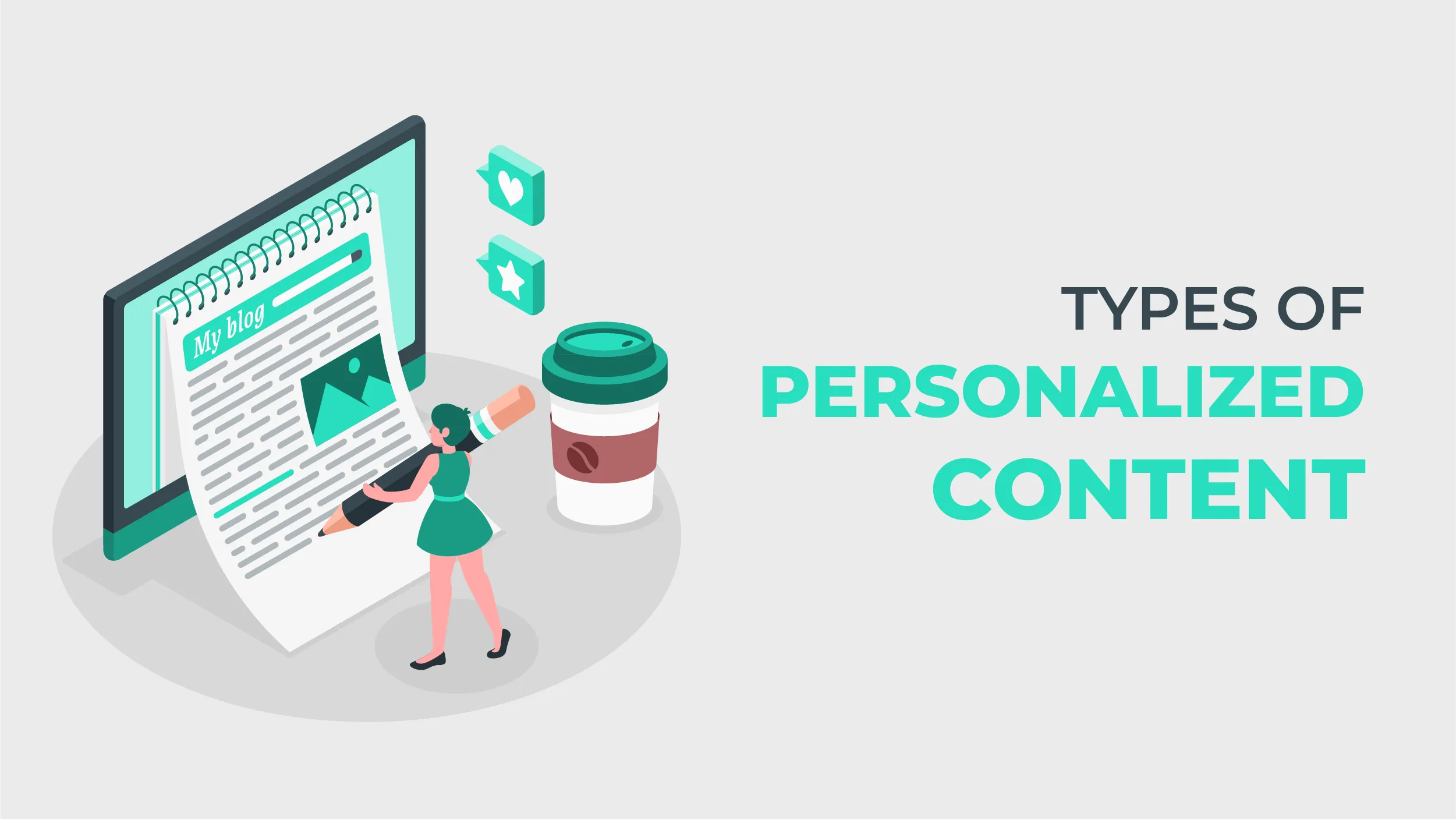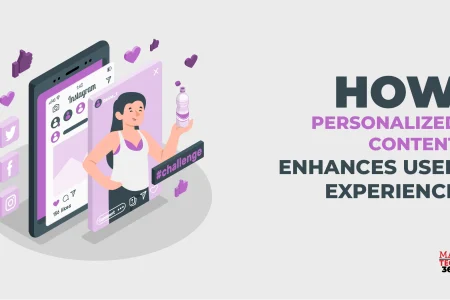Considering that 80% of consumers are more likely to purchase from brands that offer personalized experiences, the importance of personalization is evident. Businesses looking to make an impression and connect effectively with their customers are quickly recognizing that personalized content is the key.
Let’s start by setting the stage.
What is Personalized Content?
Personalized content, often referred to as dynamic content, involves delivering tailored messages to visitors and customers based on their previous interactions with your site, as well as contextual, demographic, and behavioral data.
In order to provide your potential customers with unique experiences, content personalization basically calls for you to make use of all the data and information that is accessible about them.
There are various types of personalized content. It can be shown via emails, retargeting advertisements, and other media in addition to websites (where it can be seen in headlines, CTAs, overlay messaging, and other places).
Types of Personalized Content

An effective content strategy employs a diverse range of content types, each of which can significantly benefit from personalization. Here are some of the key types.
1. Product Recommendations
Personalized product recommendations are among the most effective types of content personalization.
This is a great approach to improve your audience’s online purchasing experiences by tailoring content to them. You can make appropriate suggestions that are related to what the consumer is already interested in based on their past search or purchase history.
91% of people prefer to buy with companies that provide relevant offers and product recommendations.
2. Email Personalization
Another common form of personalized content is email personalization.
Email personalization goes beyond simply addressing recipients by name; it can also incorporate dynamic content according to user behavior, preferences, or segmentation.
For instance, a user’s viewing history can be used by an online streaming service to provide tailored recommendations or content relating to their preferred genres. Through the email channel, there is a greater probability of engagement and conversion with this focused strategy.
3. Call-to-action Personalization
Customizing call-to-action (CTA) elements means adjusting prompts or buttons according to how users interact with your site
By figuring out what catches their attention, you can fine-tune CTAs to boost conversion rates. For instance, an online subscription service might tailor its CTA to showcase a user’s favorite plan, making it more likely they’ll sign up.
4. Landing Page Personalization Based on Ads
The online experience is made more seamless when landing page content corresponds with user interactions with advertisements.
By using these personalized marketing strategies, viewers are guaranteed to see content on the landing page that enhances the messaging from the advertisement that directed them there.
5. Personalized Web Pages
These provide your online visitors with a site experience tailored just for them. Instead of using a single approach to content that results in a generic experience, website personalization allows you to deliver dynamic content that varies based on specific data points. Interest and engagement increase when content is tailored to each visitor’s specific profile.
6. Social Media Ads
Customizing social media advertisements for your target audience can be done in two primary ways.
Target specific audience segments with your ads. You can target different social media ads to the audiences who will find them most relevant. This could be based on information such as age, location, or browsing history.
Retarget potential customers who have already visited your website. This is an approach for compelling a prospective customer to make a purchase, particularly if the advertisement highlights a product they were previously considering.
7. Blog Posts
Leverage customer data to recommend specific blog posts based on topics that are likely to capture visitors’ interest. By utilizing behavioral data, you can suggest relevant blog posts and other valuable content that aligns with users’ preferences. This personalized approach enhances their online experience, encouraging them to stay on your site and explore more.
For instance, if a user spent time on an introductory blog post during a previous visit, consider sending them a download link to a more detailed PDF on the same subject. This tactic not only fosters deeper engagement but also prompts users to explore multiple pages on your website, creating a more tailored and engaging experience.
Also Read: The Present and Future of AI Content Management Unveiled
How to Deliver Personalized Content?
88% of marketers observed measurable benefits from personalization.
The process of personalizing content can be summarized into three key steps:
Step 1: Audience discovery
The first step in website personalization involves identifying the right audiences for your tailored content.
Begin by examining all available data. Review your Google Analytics account, which offers various reports to help you pinpoint the issues visitors encounter while navigating your website. Your goal is to address any obstacles in the customer journey to ensure a smooth and enjoyable experience.
Focus on visitor segments with notably lower conversion rates compared to others. These underperforming groups might be categorized by factors such as source, country, content, or landing pages visited, among others.
Step 2: Message creation
After identifying which segments require more focus, it’s time to craft messages tailored to each of the visitor segments you’ve pinpointed.
What kind of messages should you develop? It depends on the specific segment you’re targeting and the nature of your business. There isn’t a universal solution.
However, as a general rule, aim to understand your customers’ perspectives and consider how you can streamline their journey.
Step 3: Evaluation
The final step is to measure and analyze your results. You need to confirm that the software you’re using to personalize your website is delivering a solid return on investment.
At this stage, revisit step 1 to identify additional customer segments to target and enhance with personalization. Gradually, you’ll be able to allocate more of your marketing budget to high-converting personalized campaigns that yield tangible results.
To Conclude
The integration of personalized content into dynamic content marketing strategies represents a significant advancement in engaging and retaining audiences. By leveraging behavioral targeting, businesses can craft personalized marketing strategies that resonate deeply with individual preferences and behaviors. This approach not only enhances user experience optimization but also drives more meaningful interactions between brands and consumers. Embracing personalized content is not merely a trend but a strategic necessity for fostering stronger connections and achieving sustained success in today’s competitive digital landscape.

